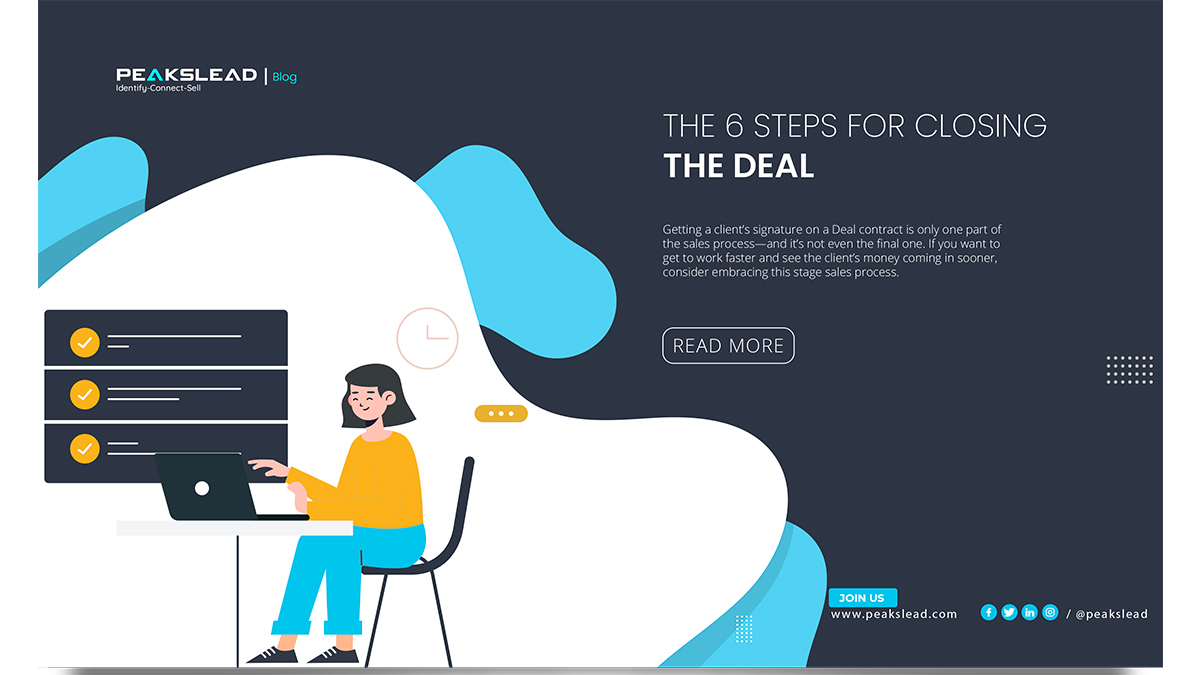
Getting a client’s signature on a Deal contract is only one part of the sales process—and it’s not even the final one. If you want to get to work faster and see the client’s money coming in sooner, consider embracing this stage sales process.
keep track of the major steps you should take, such as sending a proposal, getting a Deal contract approved by the customer’s legal team, etc.
Step 1: Identify the decision-makers
Over 40% of sales reps say prospecting is the most difficult part of the Deal process, and even the best sales pitch doesn’t amount to much if you’re not talking to the right people.
While it might feel like finding a needle in a giant corporate haystack, you can quickly identify the influencers within an organization by using an influencer map. Studies show that an average of seven people helps make buying decisions in companies with 100-500 employees, and influencer maps can take the guesswork out of finding those people. Pinpointing the right stakeholders in every sale is a crucial first step in closing sales: it saves you time, effort, and reputation. After all, the last thing any sales rep wants to be known for is blindly pitching to all the wrong people.
Step 2: Do your homework
Now that you know who the decision-makers are, it’s time to tailor your Deal presentation to them. Research as much as you can about not only the pain points of their organization but also about your competitors and why your product can serve your client’s needs better. This Deal stage of planning also includes the minutia of forms, paperwork, and pricing so that you can go into your pitch fully prepared rather than frazzled.
Step 3: Pitch the solution you’re providing, not your product
Too often the sales pitch gets lost in translation among numbers, specs, and features. Move beyond the mere “what” of your product and help your client understand its “why”: why is this the solution for them? And why choose this solution over your competitors’?
By becoming skilled at translating features into customized benefits for your client, you’ll not only show the preparation you put into your pitch, but you will also show your customers that you’re anticipating their needs as well. Thoughtful Deal presentation over an overly memorized, carbon-copy pitch will win out every time.
Step 4: Ask for the sale
Asking for the sale also gives you an opportunity to resolve concerns, should your customer waver or flat-out say no. Take the time to really listen. A scant 13% of customers think a sales rep really knows what they need; be the kind of sales rep to buck that trend.
If asking for the sale seems too aggressive at the moment, you should still ask the customer for the next steps—and be prepared to suggest the next steps (an onsite demo, a trial period, etc.) that will bring you closer to the sale.
Step 5: Anticipate and mitigate objections
Few sales are seamless as there are often objections, even small ones, that can crop up. But part of being prepared is anticipating possible obstacles to closing a sale and being attuned to concerns your client may have already shared with you.
Step 6: Create a sense of urgency
Do you have a prospect dragging their feet? Put a little pressure behind your pitch (although you should be careful of rushing the customer or getting too pushy). Whether you offer a limited-time discount or show your prospect how much time or money they are wasting without your product, you can motivate the customer to make a decision sooner.
Get in the driver’s seat and Connect with potential customers with PeaksLead.
PeaksLead offers a business model that is always straight, always forward. We generate high-quality B2B leads for your prospects—including full name, title, company name, phone number, email address, industry, and more…? Start a successful Cold Email Campaign.






Follow Us On